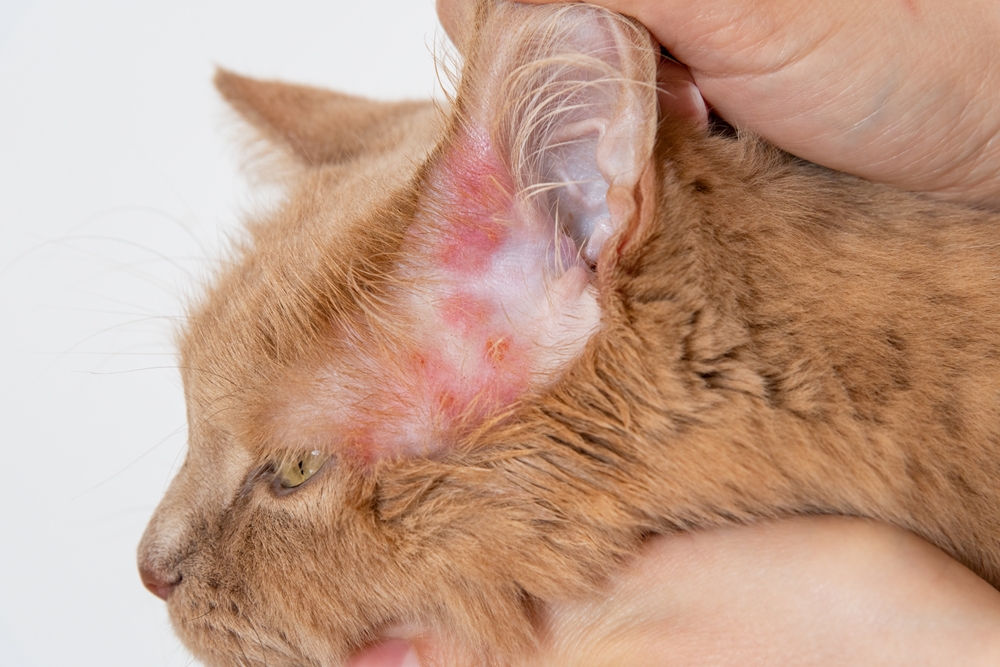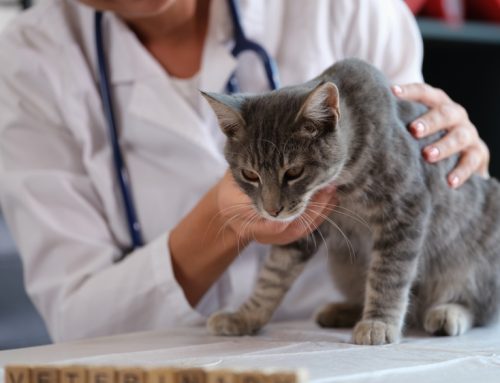Skin conditions can be uncomfortable and distressing for pets and their owners. Concerns may arise from various underlying disorders, such as allergies, parasites, infections, and more. Many skin conditions have overlapping signs, making it essential for pet owners to consult with our Chiefland Animal Hospital team to obtain an accurate diagnosis and develop an effective treatment plan. Here are examples of common pet skin conditions and how our team can help with their management.
1. Allergies in pets
Allergies are the most common cause of itching and chronic skin discomfort in pets. Environmental substances (e.g., pollens, mold, dust mites), flea bites, or food ingredients can trigger an ongoing allergic inflammation and lead to itching, redness, bacterial or yeast overgrowth, and general misery. Allergic pets often scratch, bite, or lick, and they lose hair on their paws, belly, hind end, and face. Identifying allergens is possible via blood testing and food elimination trials so pet owners can avoid the offending substances. However, most allergic pets require a multi-modal treatment regimen, including shampoos, topical and oral medications, and sometimes allergy shots.
2. Parasites in pets
External parasites, including fleas, mange mites, ear mites, and ticks, can cause skin discomfort. Depending on the species, mange mites can cause mild to intense itchiness and dramatic hair loss and skin changes when left untreated. Fleas may cause nuisance itching or, in allergic pets, severe itching, secondary infections, and hair loss. Ticks are less likely to cause itchy reactions but can transmit serious diseases to pets and people. Monthly parasite preventives can treat existing and prevent new parasite infestations, although additional medications and therapies may be required to treat mange or flea allergies.
3. Skin infections in pets
Bacteria and yeast live in peaceful harmony on healthy pet skin but can multiply out of control when skin becomes moist or inflamed. Infections are common in pets with allergies, other skin conditions, or poorly functioning immune systems, and resolving underlying skin problems can be more difficult. Signs include redness, moist areas, itching, rash-like bumps, or a gym-sock odor. Topical treatments can address mild infections and prevent recurrence, but oral antibiotics or antifungals may be required.
4. Ringworm in pets
Ringworm is an infectious fungal infection that causes red, raised, scaly, and often ring-shaped spreading skin lesions—hence the name. Pets can acquire the organisms that cause ringworm (i.e., dermatophytes) from soil, contaminated objects, or contact with infected pets or people.
Thorough and frequent home cleaning, along with oral and topical medications for your pet, can resolve ringworm infections.
5. Alopecia in pets
Alopecia is the medical term for hair loss, which can occur in pets for many reasons, including hormonal imbalances, allergies, stress, and idiopathic or genetic hair loss syndromes. Patchy alopecia caused by infections or parasites typically resolves after the underlying problem is treated. However, alopecia with no apparent cause will likely become permanent, but otherwise cause no harm. A biopsy may be required to definitively diagnose the cause for alopecia.
6. Autoimmune skin diseases in pets
An autoimmune condition is the result of the immune system going awry and mistakenly attacking healthy cells. The most common auto-immune skin conditions in pets include lupus and pemphigus, which cause blisters, ulcers, and crusting that don’t respond to typical treatments. Referral to a veterinary dermatologist who can diagnose and manage these chronic disorders may be required.
7. Systemic disorders affecting pets’ skin

Systemic health conditions, such as hypothyroidism or Cushing’s disease, can manifest in pets as skin problems. These conditions cause hormonal imbalances, which can disrupt normal hair growth cycles, damage hair follicles, cause inflammation, and diminish the skin’s normal barrier functions. Treatment focuses on resolving the underlying disorder and managing skin signs, such as itching or infections.
Recognizing common skin disorder signs and knowing when to seek veterinary care is essential to effectively identify and manage these problems. Our Chiefland Animal Hospital team can provide an accurate diagnosis and help you develop an ongoing treatment plan that will improve your furry pal’s comfort and appearance. Contact us to learn more about pet skin conditions or to schedule a visit to address your pet’s skin and coat issues.








Leave A Comment